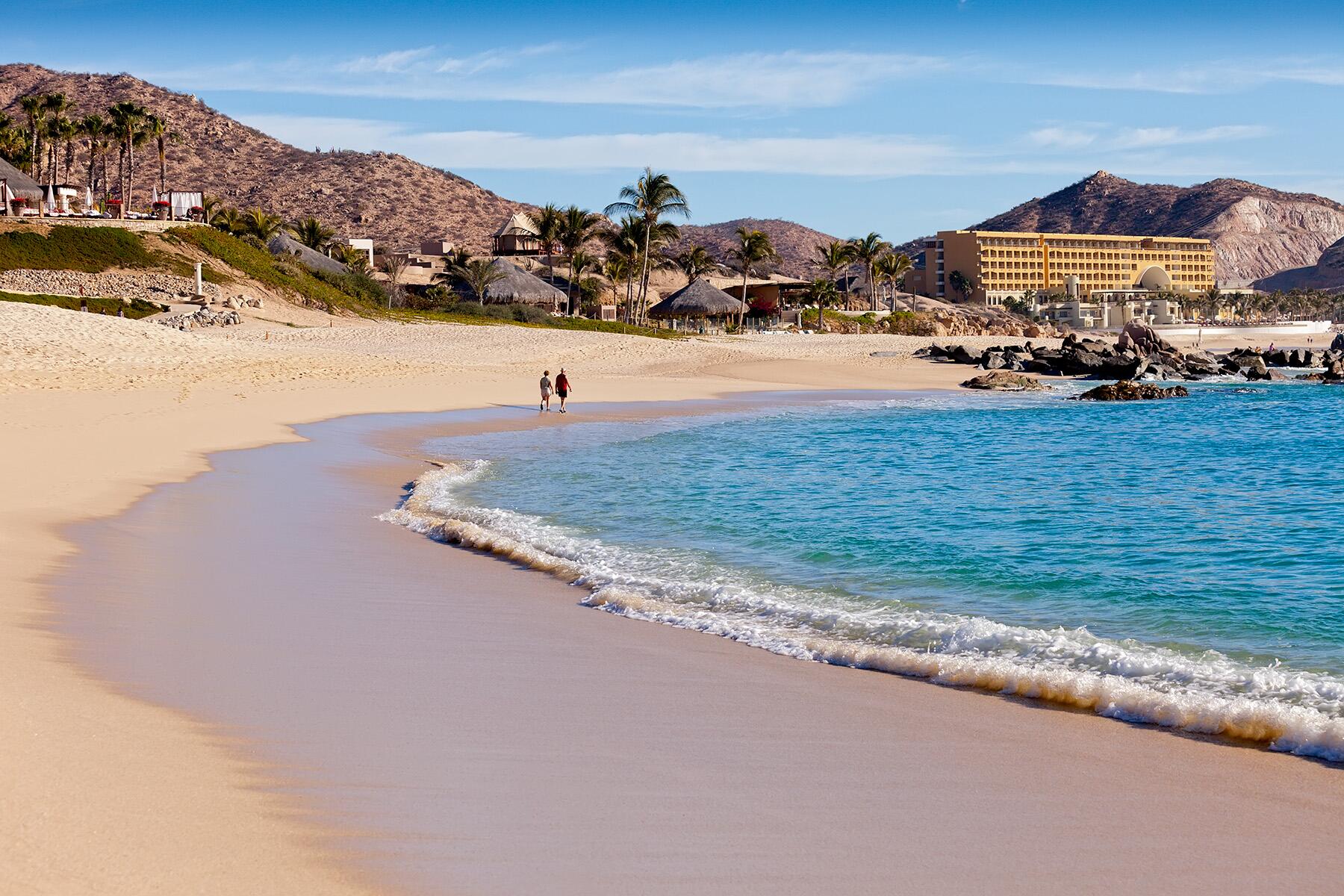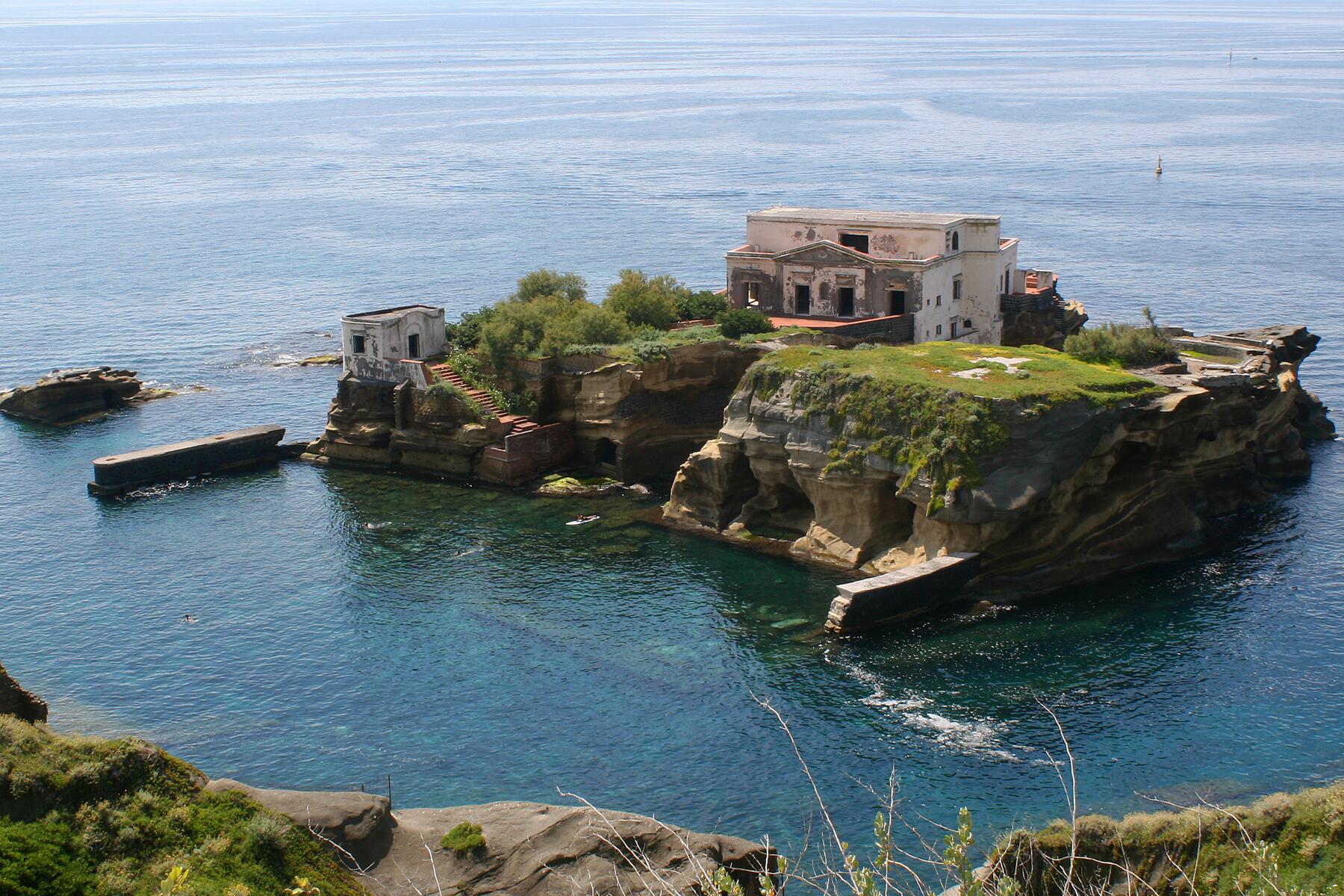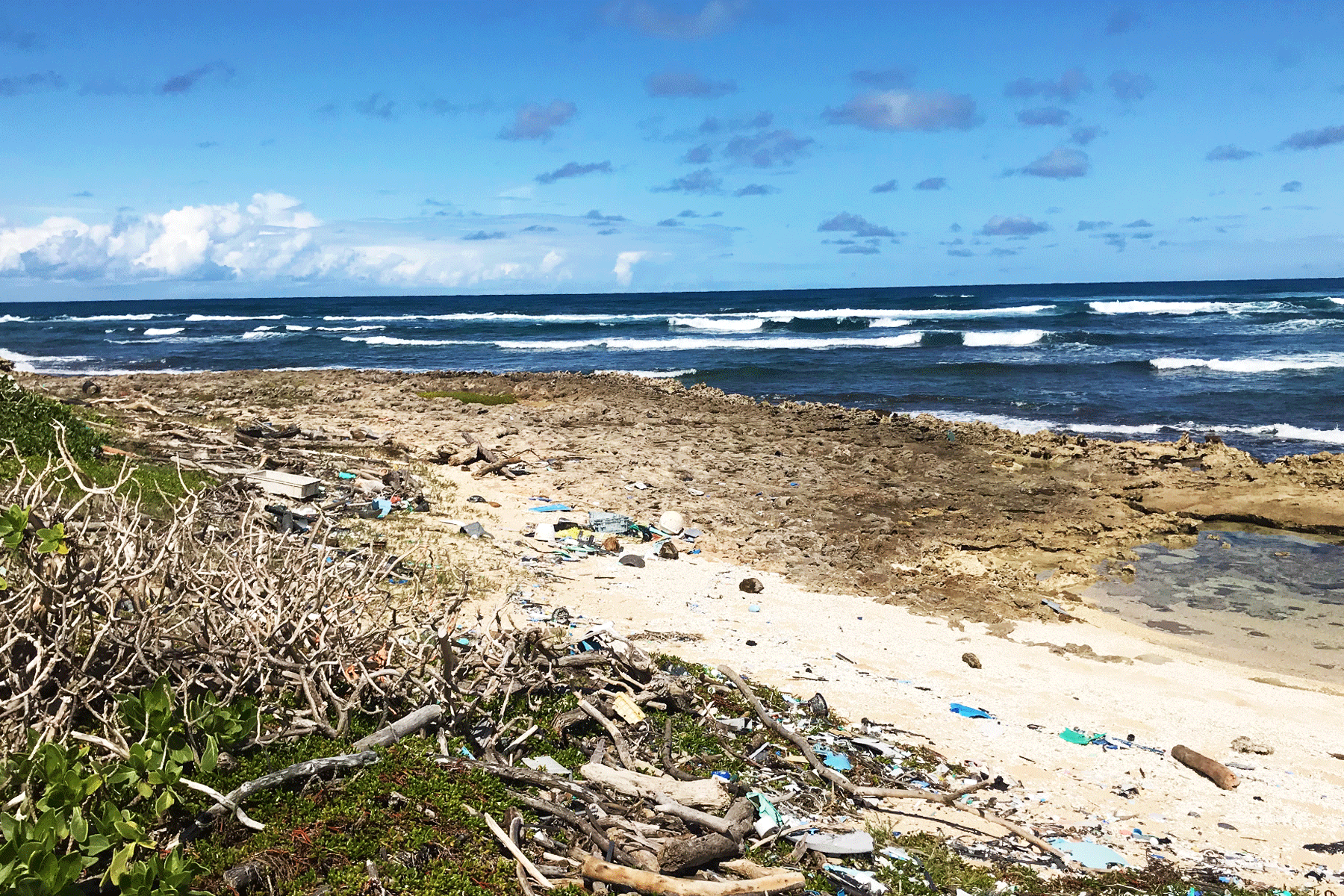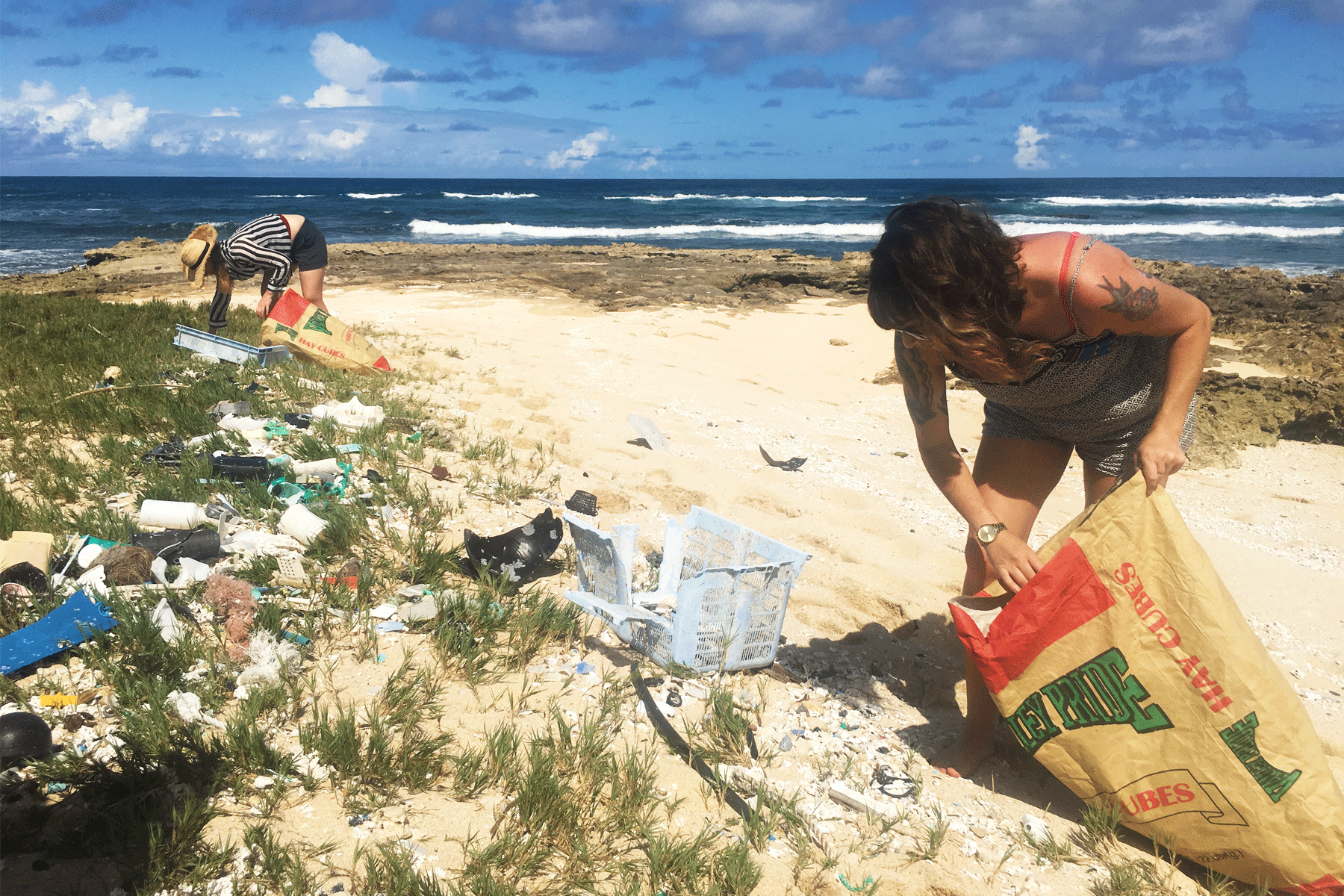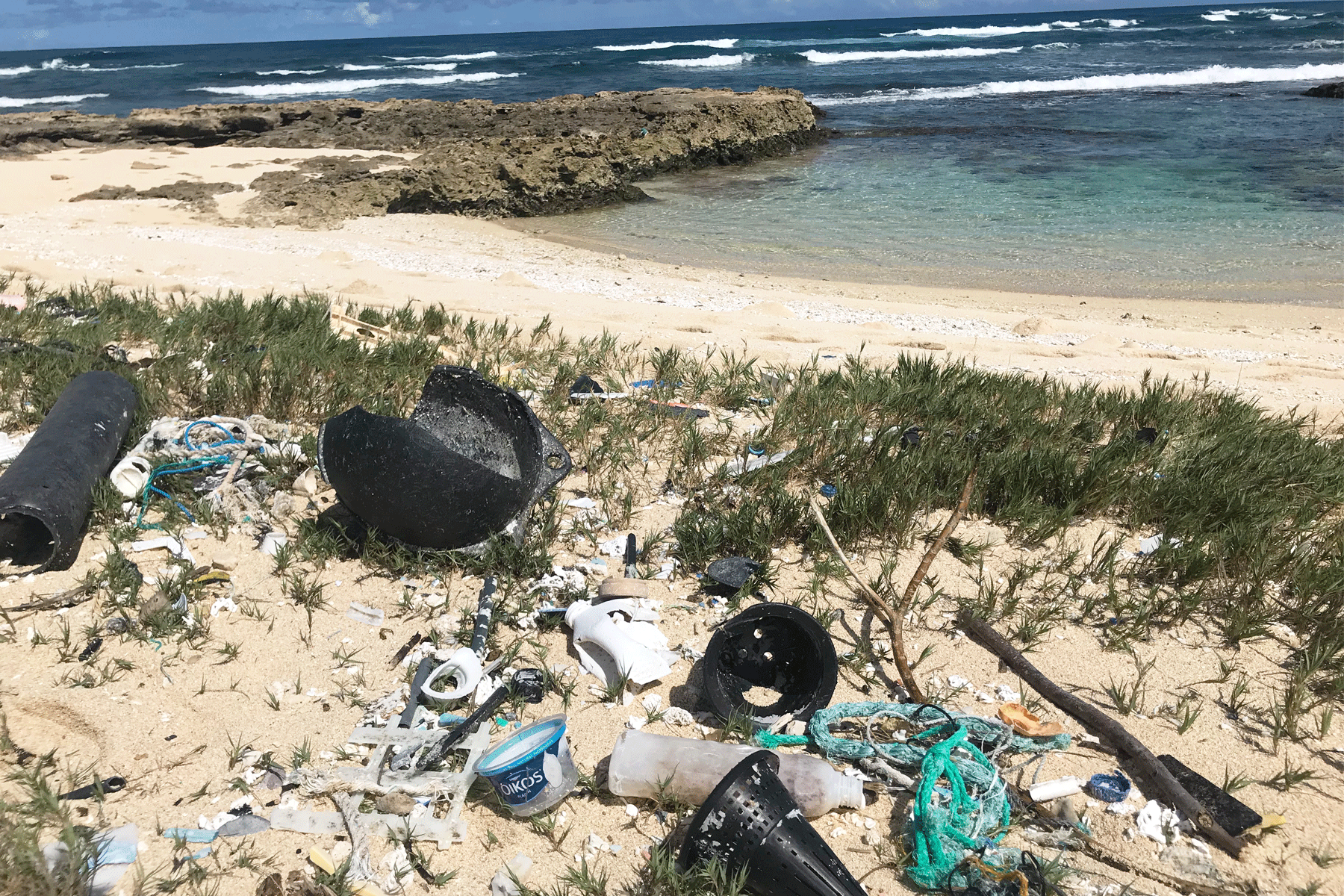Quarterly beach clean-ups at the wildlife refuge bring in volunteers who remove about 200,000 pounds of trash. But is it enough?
Last February I fled Wisconsin’s wintry temps for a week in Honolulu. Vacay goals concerned nothing more than sunbathing and sushi. I couldn’t wait to ditch snow boots for flip-flops, sweaters for a swimsuit, engage in the art of relaxation.
A few days into my stay at Surfjack Swim Club I signed up for a beach clean-up on Oahu’s North Shore, arranged by the hotel’s Director of Experience. While I’m no stranger to eco-activism, and recycle like it’s nobody’s business, what enticed me was the opportunity to venture beyond Honolulu’s congested streets teeming with high-rise hotels and souvenir shops. We’d make pit stops for shrimp and shaved ice, perhaps snap photos of surfers.
The way I saw this beach clean-up, it was going to be quick and—pardon the pun—dirty. We’d be back in Honolulu by dinner.
Once inside the 2,000-acre James Campbell National Wildlife Refuge, the last undeveloped coastline on Oahu, and on the island’s northernmost tip, Kahi Pacarro, Sustainable Coastlines Hawaii’s executive director, met with volunteers on a sand dune overlooking the beach. We couldn’t yet see the beach, but he told us what to expect.
Recommended Fodor’s Video
Turns out we were there to clean up a beach affected by the Great Pacific Garbage Patch, the largest accumulation of ocean plastic in the world, discovered in the late 1980s between California and Hawaii in the Pacific Ocean.
“Any trash that ends up in the ocean ends up in a gyre,” says Pacarro, who was born and raised on Oahu. “With the sun, it gets brittle and breaks up into little pieces. It’s a plastic soup. We’re in the gyre right now.”
Stats rolled off his tongue in a breathless rant, including one about the albatross soaring above us during our drive in: “Almost 100 percent of them have plastic in their belly,” he says, adding that when big fish eat other fish, the plastic spreads even further. My mind roiled with images of plastic pieces littering the ocean, too, all tangled together in fishing nets and, this is the worst part, consumed by animals.
As Kai says, this is the world’s trash. This is not an extension of the local garbage dump. Nor is it from a poor community in some far-flung nation that lacks recycling. Pacarro’s seen washed up on the beach slippers from a Huntington Beach, California, hotel, and empty laundry-detergent bottles with Japanese labeling.
This is the world’s trash. This is not an extension of the local garbage dump.
A few years ago, I’d read about the world’s largest gyre, stunned by images that made me never want to cart my laundry around in a plastic tub ever again. But like most news stories, I quickly forgot about the devastation and moved on.
It took no more than 30 minutes to fill a burlap potato sack. I didn’t even have to walk in search of plastic. I plopped down in the sand and started plucking the minuscule pieces that litter the sand like carpet.
Quarterly beach clean-ups at the wildlife refuge bring in volunteers who remove about 200,000 pounds of trash. But is it enough? Judging from the amount of plastic on the beach during my visit, probably not.

Back home in Milwaukee, I assessed my plastic intake. While I’d always been an avid recycler, the next step would be to not buy plastic at all because how do I know where #1 and #2 plastics end up? I vowed not to acquire any Styrofoam, non-recyclable plastic and plastic bags either. Was there a way I could buy in bulk at the local Whole Foods Market or grocery co-op? Did I have the funds to spend more on items made from natural materials—like a seagrass laundry basket, not a cheap plastic one? I was about to find out.
It started with small changes. The neighborhood pizza-by-the-slice place up the street, unfortunately, puts orders into Styrofoam containers. Now, I dine in. I’m not busy enough where I can’t take 15 minutes to eat pizza—especially when the health of our oceans is at stake. My favorite local pastry (vegan blueberry dumpling)—sold at the farmers market—comes in a plastic container that the city does not recycle. From now on, I’ll bring my own container. The next step is to write letters and emails to businesses using non-recyclable plastic, urging them to switch.
An incentive when embarking on a lifestyle change away from plastics is this: What would Hawaii be without its beaches?
I keep a paper bag near the back door to store pesky plastic wrap, things like CD packaging or the bag insert in a box of cereal, anything that isn’t soiled with food. In a week’s time, I typically have enough to bring to Target, where all of this is recycled. (Best Buy also recycles plastic wrap and plastic bags.)
An incentive when embarking on a lifestyle change away from plastics is this: What would Hawaii be without its beaches? Whether it’s the wild waves on the North Shore or a Polynesian luau in Waikiki Beach, stretches of sand are the cornerstone of Hawaii’s tourism, and how most locals stay employed.
“If we have dirty beaches, nobody’s going to come here anymore,” says Pacarro.
